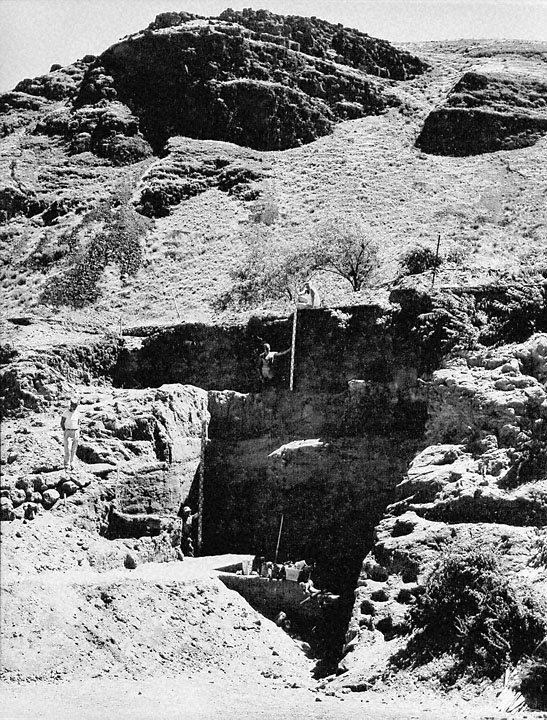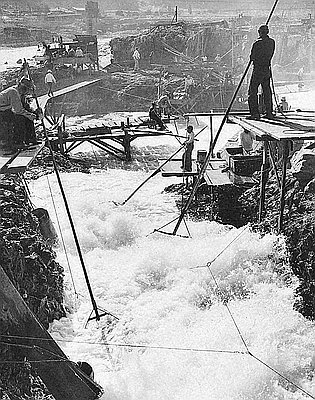In the early 1950s, archaeologist Luther S. Cressman and University of Oregon students excavated what they called the Roadcut Site near Celilo, before water from The Dalles Dam covered up the falls in 1957. Cressman and his crew found human-worked animal bones and numerous tools, including stone scrapers, projectile points, and pebble net sinkers, indicating that human occupation dated back 10,000 years. Cressman and his students also found at least 125,000 pieces of salmon vertebrae. Anthropologist Virginia L. Butler later used zooarchaeology to determine that the vertebrae were most likely accumulated by human activity. Celilo Falls, located 200 miles from the mouth of the Columbia River, was a vital fishery and place of trade for Native people from all over the Northwest. Indian fishermen caught a rich supply of different species of salmon and steelhead during the seasonal returns of the fish up the river to spawn.
Further Reading:
Aikens, Melvin. Archaeology of Oregon, 3rd ed. Portland, Oreg. 1993.
Butler, V.L. “Natural versus cultural Salmonid remains: Origin of the Dalles Roadcut Bones, Columbia River, Oregon, U.S.A.” Journal of Archaeological Science 20, 1993: 1-24
Layman, William D. “Riverplaces as Sacred Geography: The Pictographs and Petroglyphs of the Mid-Columbia River.” In Great River of the West : Essays on the Columbia River. Edited by William L. Lang and Robert C. Carriker. Seattle, Wash., 1999.
Written by Kathy Tucker, © Oregon Historical Society, 2002.

